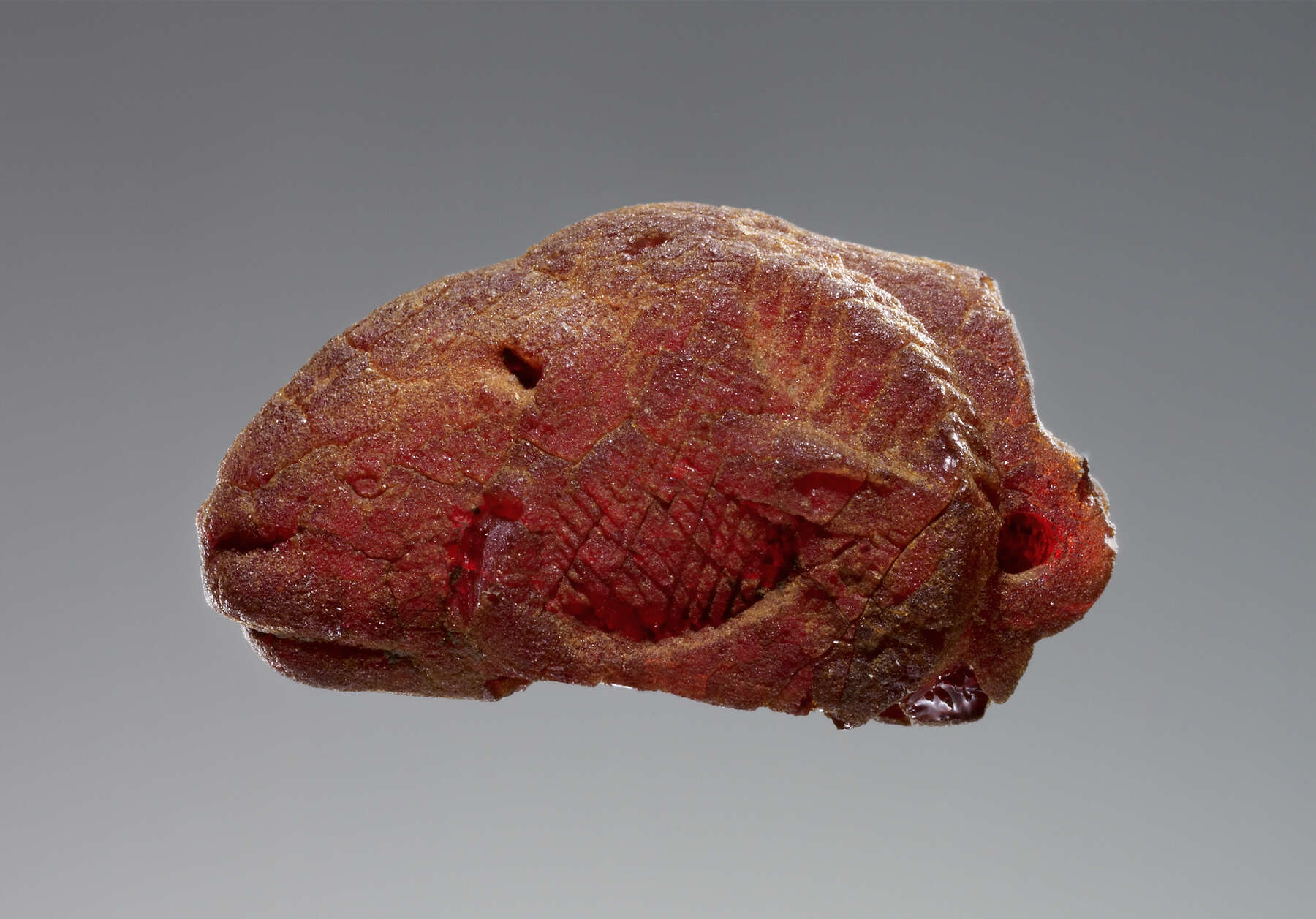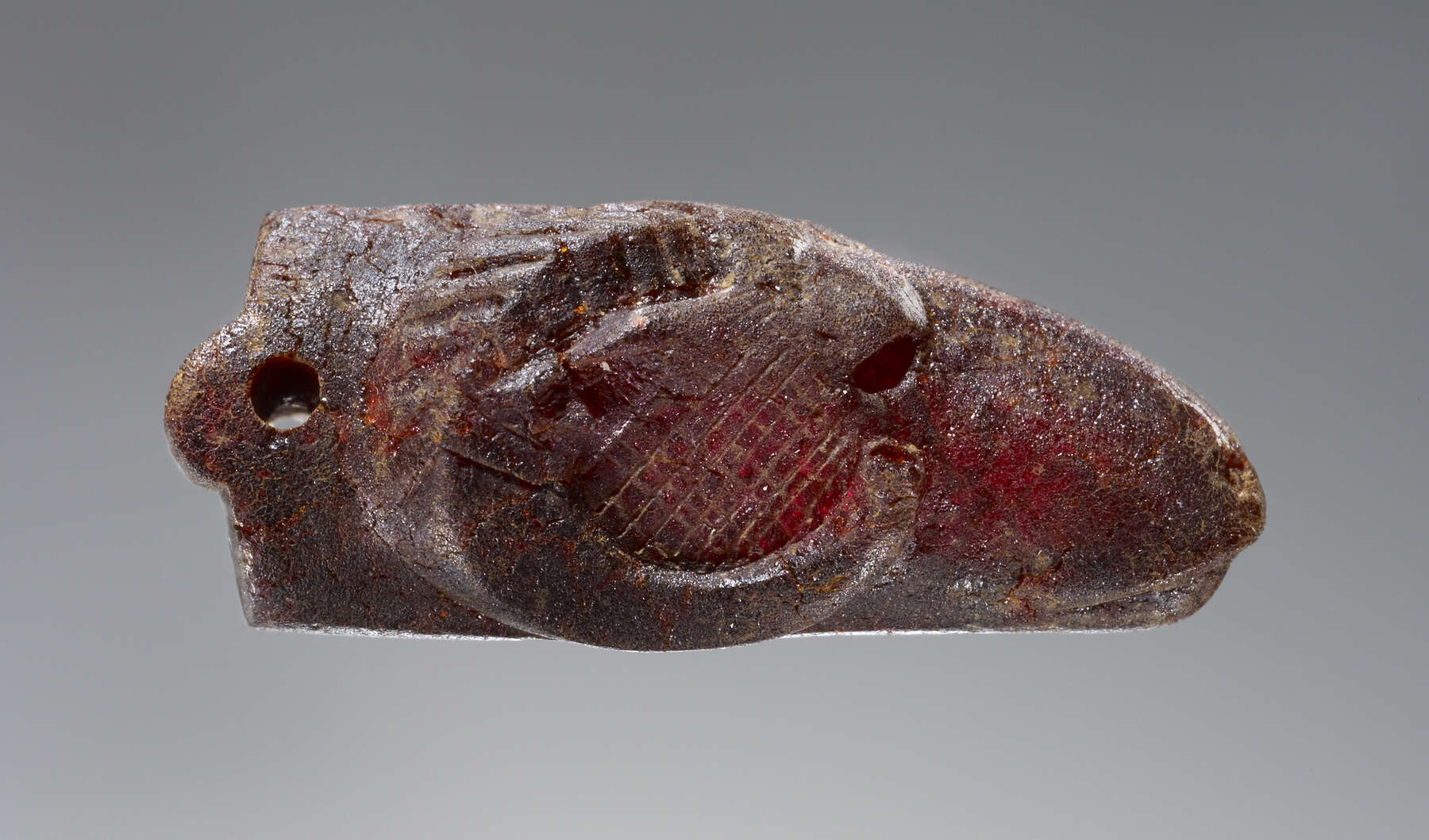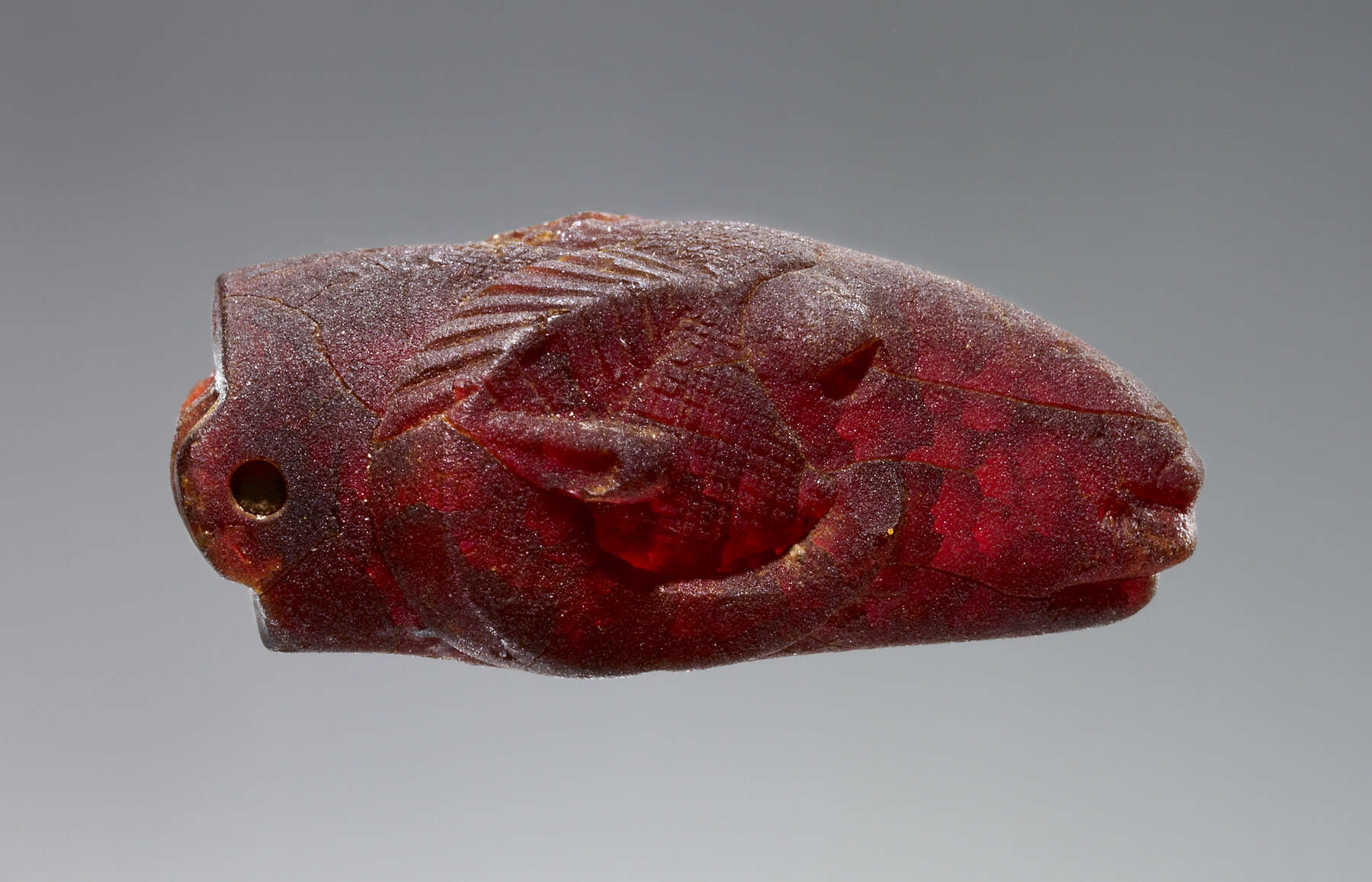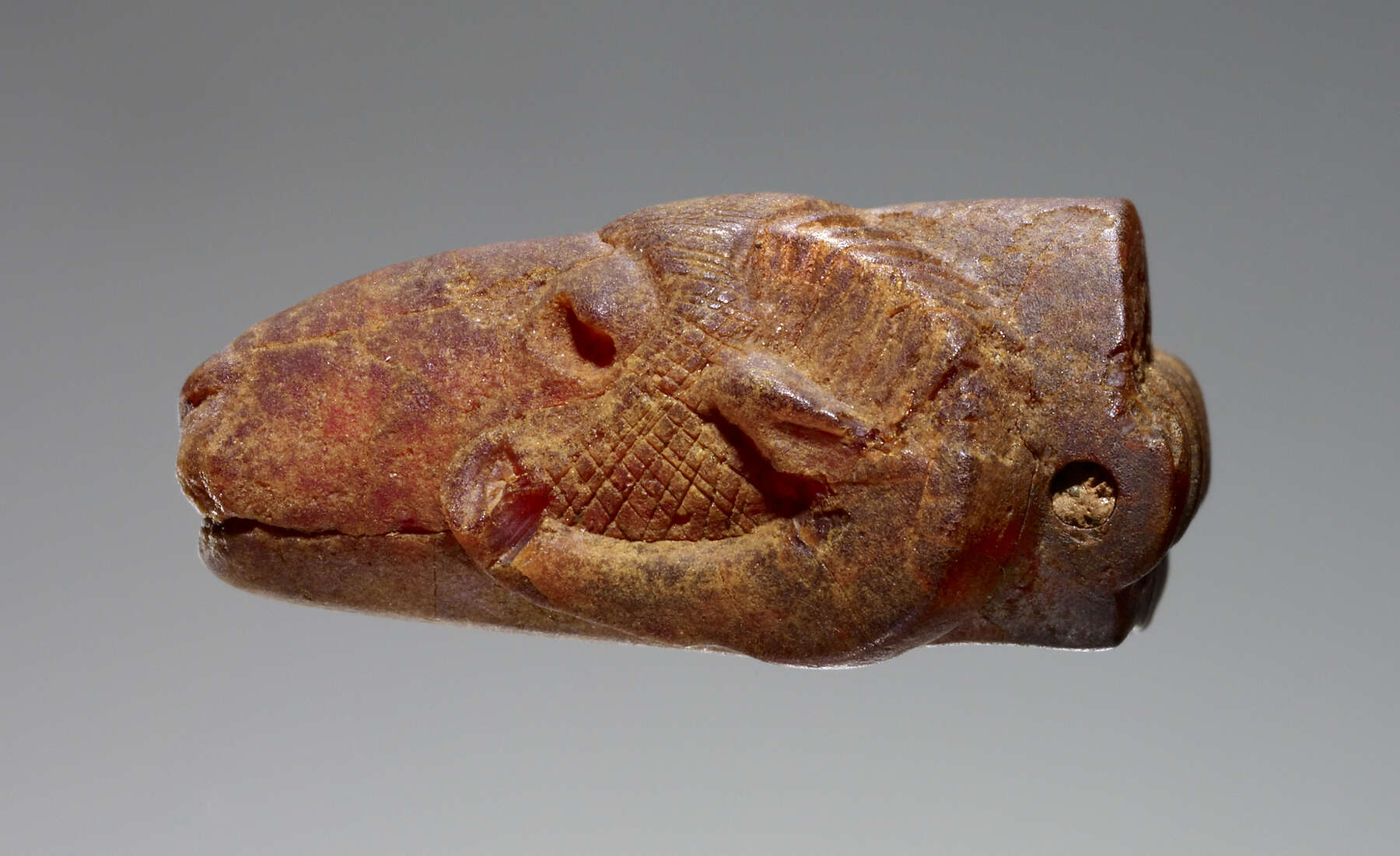48. Pendant: Ram’s Head
| Accession Number | 77.AO.81.18 |
| Culture | Italic |
| Date | 500–400 B.C. |
| Dimensions | Length: 28 mm; width: 20.5 mm; depth: 15 mm; Weight: 4.4 g |
| Subjects | Ram |
Provenance
–1977, Gordon McLendon (Dallas, TX), donated to the J. Paul Getty Museum, 1977.
Condition
The pendant is intact except for a weathered pit loss in the midsection of the right horn and a large area of breakage in the throat area. Small chip losses are found at the tips of the horns, on the right side of the upper lip, and on the suspension device (bead-and-reel) base. Details are generally soft and the surface abraded. The surface is crazed overall; there are no visible inclusions. The piece is a light red-brown, with dusty yellow degradation in areas with incised detail and crevices. In transmitted light, the amber is orange.
Description
The head of the ram is broad, full, and relatively short from nose to base. In profile, the nose is arched; the nares are slightly incised. A U-shaped incision marks the mouth. The ears are cut away on the upper side, leaving small, shelflike plateaus. A ridge indicating the fleece rises sharply from the center of the poll and sweeps around each eye to the cheek. The fleece on the cheeks is rendered by irregularly spaced, shallow cross-hatching. The eyes are unevenly carved, with the right eye shallower and smaller than the left. The outer edges of the horns are carinated and ringed with ridges that extend from the poll to the tips of the ears in a chevron pattern. The horns flare widely on the forehead, and the poll rises slightly at the joining of the horns. The area between chin and neck is flat.
The short neck terminates in a base plate with a raised bead-and-reel molding, through which a 2 mm perforation for suspension has been drilled. The pendant would have hung nose downward.
Discussion
See the entry for (cat. no. 46). In comparison to the other three pendants in this group—, (cat. no. 47), and (cat. no. 49)—the nose is more arched, the neck shorter, the head tilted downward, and the ears more worn. This pendant is also the heaviest of the four.



